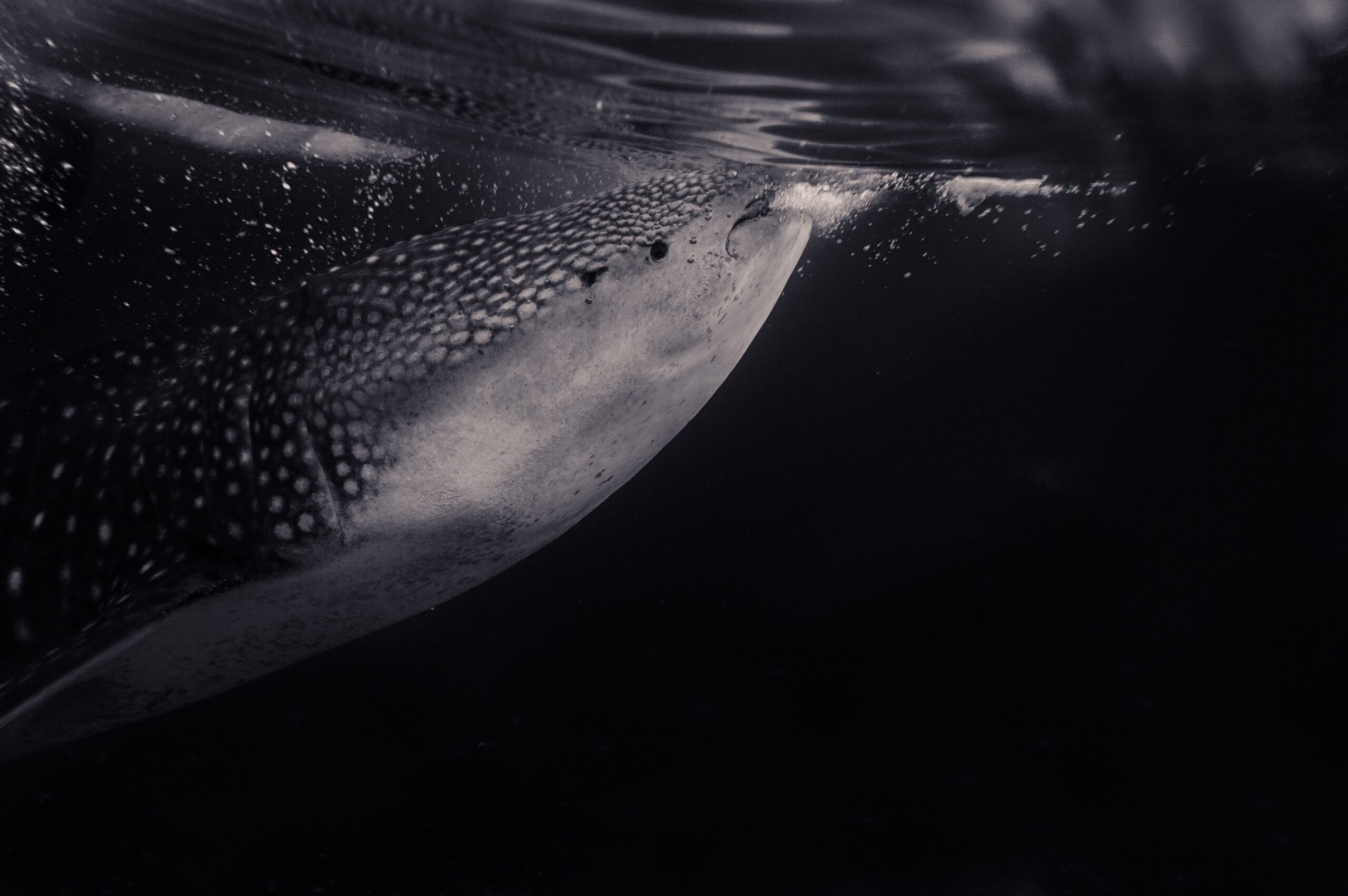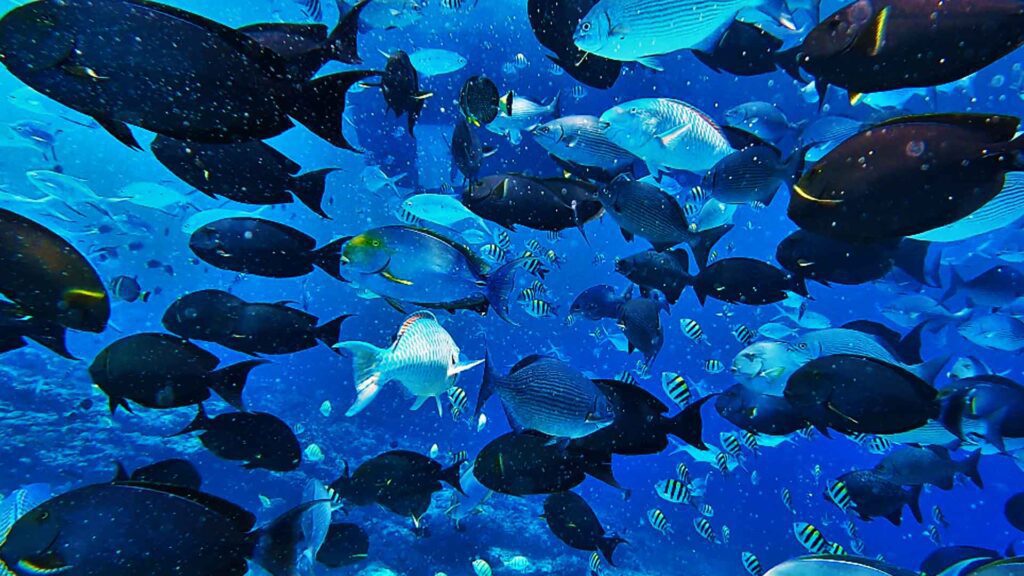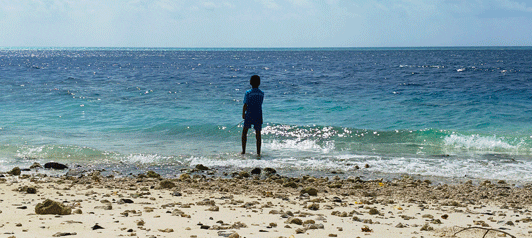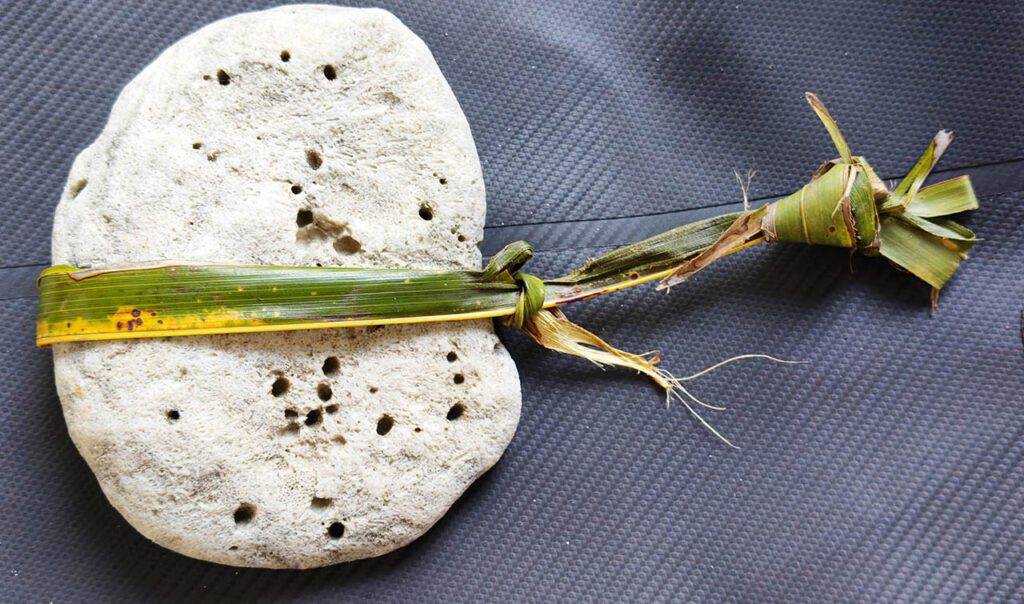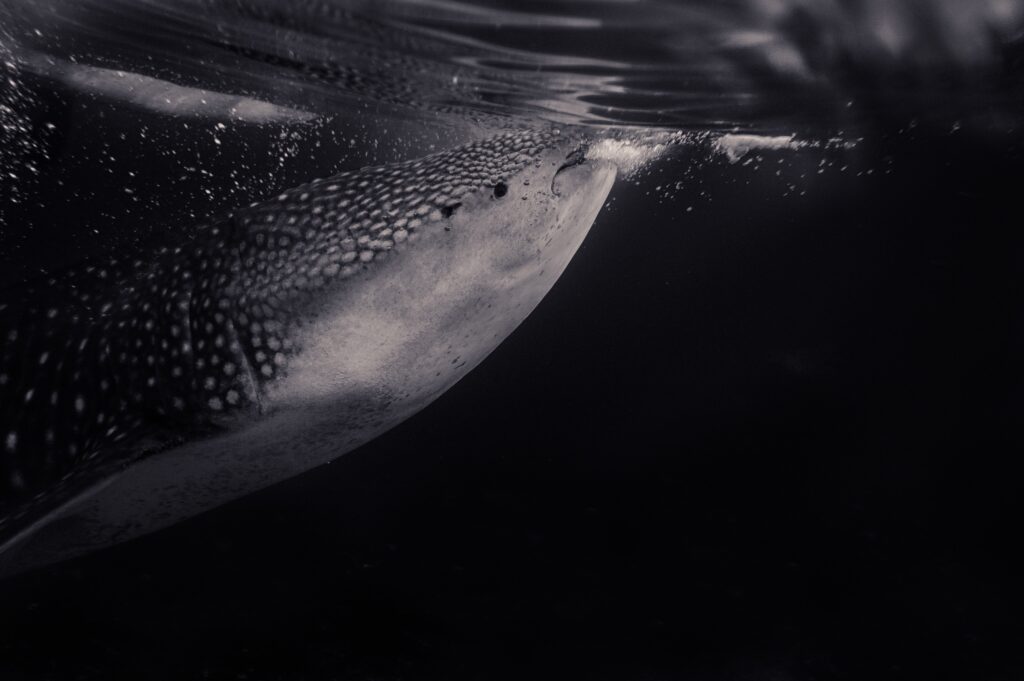
Whale shark feeding aggregations have been recorded in 20 countries, which include Australia, the Gulf of Mexico, Belize, the Gulf of California, Seychelles, and the Maldives. They feed on microscopic plankton and small fish that they suck into their mouth. Their mouth is around one and a half meters wide. They have a small throat—around the size of a drain pipe. Ram filtration and suction feeding are the two methods they use for feeding. Suction feeding allows whale sharks to feed on more mobile prey such as small fish, which they actively suck into their mouths. Whale sharks are believed to feed on suction filtering. This is because their gills are small. Shells of small Sepia and some small fishes (Gobiidid and Saurids) have been found in the stomach of one of the specimens harpooned in Batavia Bay, Indonesia. The whale shark has been noted to feed on tuna bait fish, such as anchovies and sardines (Gudger, 1915, 1918, 1935, 1941a, 1953).
Some studies have revealed that they are herbivorous. Wright (1868, 1870) found large masses of algae as stomach contents of the whale shark he examined in Seychelles. He concluded that the whale shark was herbivorous. In Indian coastal waters, Ms. Cann (1954) also carried out an examination of the stomachs of two specimens, and the observations show that marine algae could as well form an item of the food of the whale shark during its visits to the coastal waters. Researchers also conclude that the dietary habit may change according to age. It was also interesting to note the stomach of a female specimen taken from Dutch Bay, west coast of Sri Lanka, was empty (Southwell’s 1912-’13). From this, he remarked that the whale shark is an omnivorous feeder and not a purely zooplankton feeder or herbivore (Silas, n.d.).
